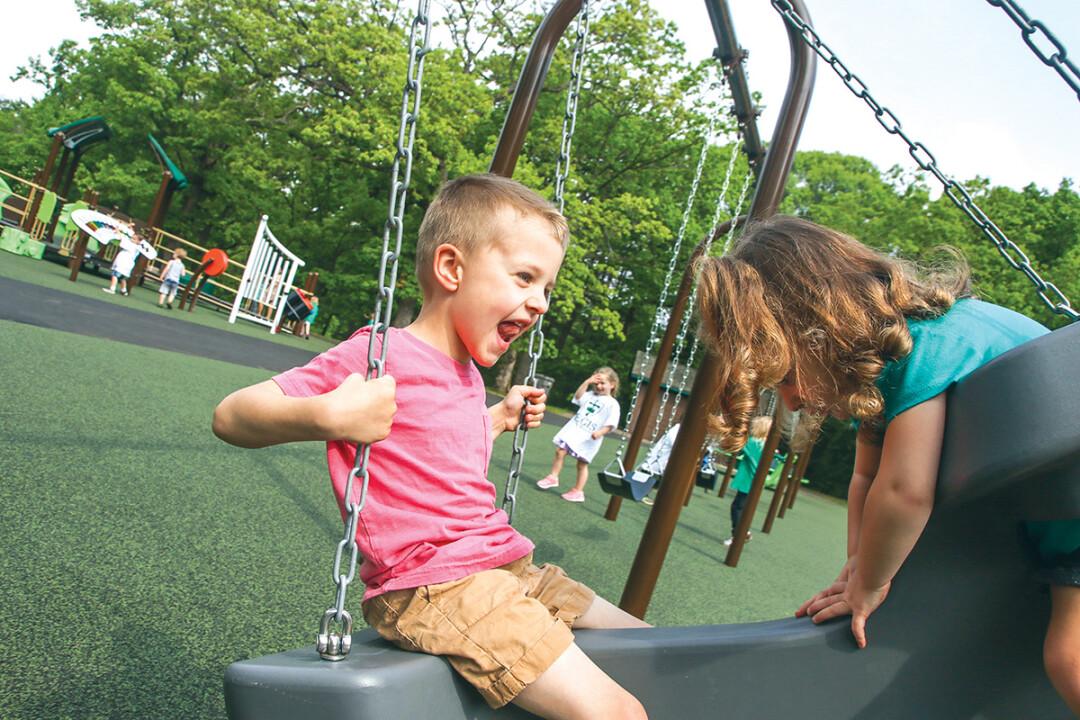Places for Parks: City likely to consider requiring developers to set aside land for parks
Lauren Fisher, photos by Andrea Paulseth |

The Eau Claire Plan Commission has begun to consider implementing a parkland dedication ordinance that would assist in the development of new parks and green spaces as the city of Eau Claire grows. At the Sept. 4 Plan Commission meeting, Pat Ivory, senior planner with the city, provided an overview of the project, including a history of the four attempts to implement such a measure in the past. Commission members instructed city staff to move forward with discussion of the project.
A parkland dedication ordinance would require residential developers to dedicate land for creating green spaces and parks, or as an alternative, pay a fee when they get a building permits, which would be used to development such spaces.
"I think we’re in a really good place now, where there’s a lot of interest (in a parkland dedication ordinance)." – Kate Beaton, Eau Claire City Council member
Eau Claire City Council members Kate Beaton and Emily Berge took up the cause of reviving the parkland dedication ordinance following a dispute this summer between Haselwander Brothers and the residents of the Princeton Valley area on Eau Claire’s northeast side. Haselwander had sought city approval for 27 new residential lots along La Salle Street in the eighth phase of its Independence Park subdivision project, which included no plans for green space. Residents reached out to the Plan Commission and City Council, which delayed approval for the project until the developers agreed to include a walking trail in their plans and set aside land for a future playground.
“What Princeton Valley did is it showed why we need such an ordinance,” said Berge, whose City Council district includes the neighborhood. “A parkland ordinance would mean that yeah, we’re gonna make it happen, we’re gonna have permanent green space as our community continues to grow and develop,” she said.
The Plan Commission is moving forward by initiating a park needs assessment, which will create an inventory of existing parks, open spaces, and recreational facilities in the municipality and of park deficiencies that will result from future development. It will identify any needs for new parks and list estimated costs of such facilities.
Following the assessment, city staff members will draft an ordinance, and invested parties – including neighborhood associations, builders associations, and developers – will be invited to provide feedback and commentary on the draft. Ivory anticipates a draft ordinance will be ready for review in early 2019.
Considerations Ivory encouraged at the initial discussion included the ordinance’s potential impact on housing affordability and availability. It is possible developers could pass the costs of such an ordinance along to consumers through higher prices, or choose to develop in surrounding towns that don’t levy such fees, he said.
While past attempts, as recent as 2002 and 2008, to pass similar ordinances failed, Beaton is hopeful for this project. Since the last time the measure was considered, the council has seen 100 percent turnover. “I think we’re in a really good place now, where there’s a lot of interest, a lot of interest among City Council staff, clearly a lot of interest among constituents, too – we’re really excited to be the people to do it,” Beaton said.


















